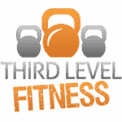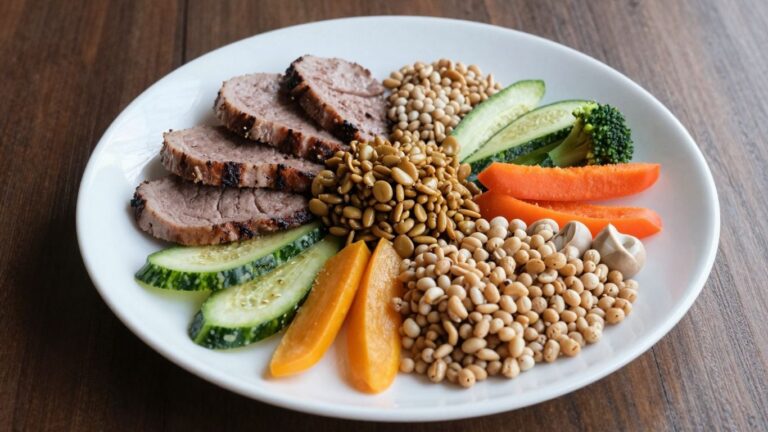Starting a gym routine can feel overwhelming, but it doesn’t have to be complicated. Most folks just want to feel stronger, have more energy, and maybe look a bit better in their favorite clothes. The truth is, you don’t need fancy equipment or a perfect plan to get results at the gym. It’s all about showing up, sticking with it, and making small changes that add up over time. In this guide, I’ll walk you through the basics of building a healthier, stronger body at the gym—no confusing jargon or wild promises, just simple steps that actually work.
Key Takeaways
- Start with a gym routine you can actually maintain—consistency matters more than perfection.
- Focus on big movements like squats and presses, and slowly increase the weight or reps as you get stronger.
- Eat enough protein and calories to support your workouts, but don’t overthink supplements at the start.
- Give your body real rest—sleep well and don’t skip rest days, or you’ll burn out fast.
- Track your progress in more ways than just the scale, and celebrate the small wins along the way.
Building a Sustainable Gym Routine
Starting something new always comes with a big burst of motivation, but maintaining that groove week after week is its own challenge. Building a sustainable gym routine is all about creating a system you can keep up with, not just chasing quick wins. A routine that fits your lifestyle will always beat one that burns you out in a month. Let’s break down how to set yourself up for success at the gym, for the long haul.
Finding the Right Gym for Your Goals
When you’re choosing a gym, think practical first. Convenience is key: pick a location that’s close to home or your workplace, with hours that fit your schedule. A quick gym trip is much more doable than fighting traffic twice a day.
Consider your goals. Are you looking to lift heavy? Check for squat racks and deadlift platforms. Want cardio options or group classes? Scan the class schedule and look around at the equipment. Most gyms will let you do a trial session. Don’t be shy—test the vibe, see if the atmosphere feels comfortable for you.
- Make sure the gym isn’t too crowded during your prime workout hours
- Check for personal trainers or coaches if you want guidance
- Don’t forget basics like showers, locker rooms, and parking
If your gym feels like a hassle, you’ll find plenty of reasons to skip. Picking the right spot makes showing up much easier.
Establishing a Workout Schedule You’ll Enjoy
So, you’ve got the membership—now what? Scheduling matters. If you dread 6am alarms or late-night lifts, don’t force it. Find a rhythm you can actually look forward to. Here’s a sample way to flesh out your week:
| Day | Workout Type |
|---|---|
| Monday | Full Body Strength |
| Wednesday | Cardio + Core |
| Friday | Upper Body + Mobility |
The goal isn’t to cram in as many workouts as possible. Quality wins over quantity. Give yourself permission to adapt as you go—missing a workout doesn’t mean you’ve failed. Adjust your schedule if needed, but keep showing up.
Creating a Habit That Lasts
Anyone can be motivated for a week. The trick is turning those workouts into an unbreakable part of your routine. Here’s how:
- Start small—two or three sessions per week is plenty to see results
- Pair your workout with an existing habit, like exercising right after work
- Track each workout on paper or an app—it feels good to see your progress pile up
If you’re training at home, a simple equipment setup with free weights and resistance bands can eliminate excuses and help cement the habit.
Remember: building muscle and fitness takes time. What matters most is that you show up, again and again, making steady progress each week.
Smart Training Principles for Real Results
Building muscle and getting stronger at the gym can be simple, but knowing where to start and what to focus on is half the battle. You don’t need fancy moves or the heaviest weights in the room. Instead, it’s about doing the basics well and sticking to proven methods.
Understanding Progressive Overload
If you want your muscles to grow and get stronger, they need a reason to do it. Progressive overload is all about increasing the challenge over time so you force your body to adapt. A lot of people hit a wall because they keep doing the same thing—same weights, same reps, same routines. The trick is to keep upping the ante, but it doesn’t have to mean piling on tons of weight right away.
Some easy ways to progress:
- Lift a little heavier every few workouts, even if it’s just a small jump.
- Squeeze out another rep or two at the same weight when you can.
- Shorten your rest a bit to make an old workout feel new.
- Focus on moving a weight slower and with control, increasing time under tension.
Little changes add up more than you think. Slow and steady progress beats trying to break records every session.
Choosing Effective Compound Exercises
Workout routines can get overwhelming, but one thing is clear: compound movements get you more for your time. These are the lifts that use more than one joint and a lot of muscle at the same time. Think squats, bench press, rows, and deadlifts. They burn more calories, build more muscle, and even help with your everyday strength (like carrying groceries without feeling wiped).
A few solid compound moves to build your routine around:
- Squats (or leg press)
- Bench press (or push-ups)
- Pull-ups or rows
- Deadlifts or hip thrusts
If you’re putting together your schedule, you can look at tips for picking the right exercises by checking out how to select and structure key workouts.
Mixing Free Weights and Machines Safely
There’s a place for both dumbbells, barbells, and machines on the gym floor. Free weights train more stabilizer muscles, help with balance, and usually allow more natural movement. Machines, on the other hand, guide your motion so they’re easier to learn and can keep things safe if you’re tired or just starting.
A smart approach:
- Start with free weights for the big, basic moves if you’re comfortable.
- Use machines to safely add extra volume, especially for isolating individual muscles or when you’re working around an ache or injury.
- Rotate the tools to keep training interesting, but always focus on good form first.
| Tool | Benefits | Good For |
|---|---|---|
| Free Weights | More muscles at once, balance, real-world carryover | Main lifts, functional strength |
| Machines | Guided motion, less risk, easy for beginners | Isolating muscles, finishing sets |
Don’t worry about having the ‘perfect’ routine. The best plan is the one you’ll stick with, and the one that keeps you coming back to the gym consistently.
Nourishing Your Body for Muscle Growth
If you want to see your hard gym work pay off, you have to eat in a way that supports building new muscle. Training sparks muscle growth, but the food you choose is what really lets your muscles recover and get bigger over time. Let’s break down what matters most, from macros to hydration.
Optimal Protein and Calorie Intake
Sticking to a calorie surplus is key if your goal is to gain muscle. You need to eat a bit more than you burn each day to give your body energy for muscle-building.
- Figure out your maintenance calories (lots of online calculators for this) and aim for 300–500 extra calories daily. Too much more and you’ll just store more fat.
- Prioritize protein. Aim for 0.7–1 gram per pound of bodyweight each day. Try to get protein from different sources—chicken, lean beef, eggs, Greek yogurt, lentils, tofu, or fish all work.
- Don’t forget about carbs and healthy fats. Carbs help fuel your workouts, and fats are important for hormones involved in muscle growth.
| Macro | Daily Target (per lb bodyweight) | Sample Foods |
|---|---|---|
| Protein | 0.7–1g | Chicken, fish, eggs, Greek yogurt |
| Carbs | 1.5–2g | Rice, oats, potatoes, fruits |
| Fats | 0.3–0.4g | Olive oil, avocados, nuts, seeds |
It’s easy to overthink nutrition, but start simple: hit your protein target and eat a little more than usual. Track for a couple of weeks so you know you’re really in a surplus.
Smart Supplement Strategies
Supplements get hyped, but most are totally optional if your basic diet is on track. Here’s what’s actually helpful:
- Whey or plant-based protein powder: Great for days when you’re short on protein and need something quick.
- Creatine monohydrate: Creatine lets you push harder and supports muscle growth. It’s one of the most researched and safe options.
- Caffeine (coffee): Can help you get through tough workouts, but don’t rely on it to replace good sleep or nutrition.
That’s basically it. Everything else is extra, and you’ll see little difference if your main nutrition isn’t dialed in.
Hydration and Its Role in Gym Performance
Hydration gets overlooked but is actually really important for both muscle function and gym success.
- Being even a little dehydrated makes you feel tired and makes workouts feel harder.
- Drink water throughout the day—don’t just slam a bottle before your workout. Make it a habit by keeping water near you at all times.
- If your workouts are long or super sweaty, toss in a pinch of salt or try a sports drink for electrolyte balance.
- Quick check: urine should be pale yellow—not totally clear, but not dark.
You don’t need fancy electrolyte supplements unless you’re training in high heat for hours. For most people, regular water and a normal diet do the job.
If you keep it simple—eat enough, focus on protein, steady water intake, and use supplements when you need help—you’re on the right track for muscle growth!
The Critical Role of Rest and Recovery
Rest and recovery are where your hard work at the gym actually pays off. It might sound odd if you’re used to the idea that progress only happens when you’re lifting or pushing yourself, but your muscles actually rebuild and get stronger while you’re resting, not during the workout itself. Skip recovery, and all that effort kind of goes to waste.
Prioritizing Sleep for Muscle Repair
If you ever wake up groggy or sore, your body might be trying to get your attention. Aiming for at least seven hours of quality sleep each night helps your muscles repair those microtears created during exercise. Deep sleep is when the magic happens, and your body sends out growth hormone to rebuild tissue. Try these nightly habits for better muscle repair:
- Stick to a consistent sleep schedule
- Avoid screens an hour before bedtime
- Keep your room cool and dark
- Consider a calming routine like light stretching or reading
If you wake up feeling tired often, don’t ignore it—your performance at the gym and recovery depend on what happens while you’re sleeping.
Planning Rest Days and Active Recovery
Rest days aren’t a sign of slacking off. In fact, pushing yourself every day usually backfires over time. Your body needs time off to repair and grow, whether that’s chilling on the couch or going for an easy walk. Here are some options for a smarter approach:
- Total rest: No planned activity; let your body recharge
- Active recovery: Gentle movement like walking, yoga, or light cycling
- Focus on mobility: Foam rolling or stretching sessions
Balance is key, and many gym-goers see better results with steady rest days. You can read more about how sleep and recovery promote results at Optimal gym results depend on recovery.
Recognizing and Preventing Overtraining
It’s easy to get caught in the trap of wanting more, but sometimes less is more. Overtraining brings fatigue, potential injury, and sometimes kills your motivation. Watch for these signs:
- Consistent tiredness or trouble sleeping
- Random aches that won’t fade
- Getting weaker, not stronger, in the gym
- Big dips in motivation or mood
To dodge burnout:
- Listen to your body—take extra rest if you feel run-down.
- Scale back intensity for a week after 4–6 weeks of hard training. Deloading lets you reset.
- Don’t skip meals or hydration—they’re part of recovery, too.
A little patience can mean years of solid progress, while ignoring rest usually ends up in frustration, plateaus, or even injury. Rest is just as important as training if you want to build a stronger, healthier body that lasts.
Avoiding Common Pitfalls on Your Gym Journey
Getting started at the gym is exciting, but there are a few common traps that can knock you off course. Everyone slips up sometimes, so let’s break down what to watch for and how to sidestep these bumps in the road.
Staying Consistent Amid Setbacks
It’s sticking to your plan—even when life gets in the way—that makes real progress possible. All sorts of things can cut into gym time: work, family, or just plain exhaustion. Here’s how to keep showing up:
- Set flexible workout windows instead of rigid times
- Don’t beat yourself up over missed days, just get back on track
- Have a backup plan for busy weeks—think shorter workouts or at-home options
The important thing isn’t being perfect, it’s showing up for yourself more often than not—especially when it feels like things aren’t going perfectly.
Tracking Progress Beyond the Scale
Muscle doesn’t always show up as weight loss, and sometimes the scale barely budges even as your body changes. To keep your motivation high, start tracking other signs:
| Progress Type | What to Look For |
|---|---|
| Strength Gains | Lifting more weight, more reps |
| Body Measurements | Inches lost or gained |
| Endurance | More stamina during workouts |
| Non-Scale Victories | Better sleep, more confidence, etc. |
Check in on these every few weeks. Consistency here pays off.
Overcoming Plateaus With Simple Tweaks
Everyone hits a wall at some point when results stall out. The good news? Little changes can restart your progress:
- Mix up your exercises—try a new lift or add a different cardio machine
- Change your rep and set scheme (for example, try 4 sets of 8 instead of 3 sets of 10)
- Adjust your rest time between sets
- Review your sleep and food intake—sometimes, more protein or an extra hour of sleep works wonders
Plateaus aren’t failures; they’re just a sign your body is getting used to the routine. Give it a nudge, and you’ll break through soon enough.
Gaining Strength at Any Fitness Level
Building strength at the gym isn’t just for bodybuilders or athletes. Anyone—regardless of where you’re starting—can see real gains by taking the right approach. The trick is to match your plan to your current level and focus on steady, gradual progress. Consistency beats intensity in the long haul, no matter how new or seasoned you are.
Adapting Workouts for Beginners and Veterans
No two people walk into the gym with the same background, so tailoring your program is key:
- Beginners should master bodyweight and basic compound movements. Focus on form with things like squats, push-ups, and rows, before jumping to heavy weight.
- If you’re more advanced, challenge yourself by increasing weight or trying new exercise variations to avoid getting stuck at a plateau.
- Everyone benefits from a routine that mixes some full-body days with more targeted lifts as you progress.Strength training builds muscle and overall health
A simple way to adjust a workout:
| Skill Level | Weekly Frequency | Main Focus |
|---|---|---|
| Beginner | 2-3 times | Learn basics, good form |
| Intermediate | 3-4 times | Add weight, refine |
| Advanced | 4-6 times | Heavy compound lifts |
It’s normal to feel awkward starting out. The right way is usually whatever keeps you safe, keeps you coming back, and pushes you just a bit past your comfort zone.
Combining Cardio and Strength Training Effectively
You don’t need to choose between lifting and cardio—they both support your strength journey, just in different ways.
- Schedule cardio on days that aren’t your heaviest lifting days, or after weights if you do both in one session.
- Try short bursts like interval sprints or a brisk walk on the treadmill instead of long, exhausting runs—these save energy for building muscle.
- A combined approach boosts heart health, stamina, and helps you recover faster between sets.
Listening to Your Body’s Feedback
Ignoring aches or burnout will stall your progress faster than any missed session.
- Pay attention to sharp pain or fatigue. These are signals to rest, switch things up, or lower intensity.
- Keep a log or simple notes on how you felt after each workout to spot patterns.
- If progress stalls, tweak your plan: add a rest day, change the number of reps, or even take a week off for better recovery.
Remember, strength is personal—and even slow, steady efforts will add up to real change. Stay tuned to your own feedback and be patient with plateaus.
Nobody gets it perfect right away, but each session lays another brick in a stronger, healthier body. Stick with it, and give yourself credit for every bit of progress.
Staying Motivated and Celebrating Wins
Keeping your fire alive at the gym isn’t as simple as listening to a hype playlist or buying new gear. Over months of pushing through tough sessions, motivation comes and goes. What keeps most people going is how they track progress and celebrate the steps forward—no matter how small.
Highlighting Non-Scale Victories
The number on the scale only tells a tiny piece of your story. Sometimes, it won’t budge even when you’re showing up and putting in the work. Non-scale victories are just as important as losing weight or gaining muscle. Here are a few worth noting:
- Increasing your lifting weight—even just five pounds.
- Finishing a tough workout without stopping.
- Noticing new energy levels, better sleep, or less daily stress.
- Fitting into old jeans that haven’t zipped in ages.
It’s these non-scale wins that often remind you how far you’ve come, even when progress feels slow or invisible.
Setting Short-Term and Long-Term Gym Goals
Goals keep you anchored. Not just at New Year’s, but on random Tuesdays when motivation feels like a stranger. It helps to set both immediate and bigger targets you can work toward. Structure your goals:
| Type of Goal | Example |
|---|---|
| Short-Term | Complete 4 workouts this week |
| Medium-Term | Squat your bodyweight in 2 months |
| Long-Term | Run a half-marathon by next year |
Tips for sticking to your goals:
- Make them specific and measurable.
- Write them down somewhere you’ll see often.
- Review and adjust as you grow.
Building a Support Network for Continued Success
Motivation sometimes sputters out when you’re on your own. A support network keeps you showing up—even when your own willpower gets shaky. You don’t need a huge fan club – just a few reliable people can make a huge difference:
- Find a workout buddy or accountability partner.
- Join a fitness class or a club where you see familiar faces.
- Share your challenges and wins with family or friends—even online groups work.
If you slip up or hit a rough patch, having someone in your corner can nudge you back on track.
Remember, celebrating your wins matters as much as hitting your end goal. Take a step back now and then, appreciate what you’ve done, and let those wins fuel your next session.
Wrapping It Up: Your Gym Journey Starts Now
So, there you have it. Building a stronger, healthier body at the gym isn’t about chasing perfection or following every trend you see online. It’s about showing up, doing the work, and making small changes that add up over time. Some days you’ll feel like a superhero, and other days you might just want to go home and eat pizza. That’s normal. The important thing is to keep moving forward, even if it’s just one rep at a time. Remember, everyone starts somewhere, and progress is different for each person. Stick with the basics—lift, eat well, rest, and repeat. Celebrate your wins, learn from the tough days, and don’t be afraid to ask for help when you need it. Your future self will thank you for every bit of effort you put in today. Good luck, and see you at the gym!
Frequently Asked Questions
How often should I work out to see real results?
To build muscle and get stronger, aim to work out about 3 to 4 times a week. This gives your body enough time to rest and recover between sessions. Try to stick to a regular schedule so your body can get used to the routine.
Do I need to lift heavy weights to build muscle?
You don’t have to lift the heaviest weights in the gym to get stronger. Start with weights that challenge you but let you keep good form. As you get stronger, slowly add more weight or do more reps to keep making progress.
Can I build muscle using only bodyweight exercises?
Yes, you can! Push-ups, squats, lunges, and pull-ups are great for building muscle, especially if you’re just starting. As you get better, you can make these moves harder by changing the speed, adding more reps, or trying tougher versions.
How important is what I eat for muscle growth?
Eating enough food, especially protein, is really important for building muscle. Try to eat a mix of proteins (like chicken, fish, beans, or eggs), healthy carbs, and some fats. Drinking enough water also helps your muscles work better during workouts.
What should I do if I stop seeing progress?
If you feel stuck, try changing your workout routine a little. You can add new exercises, increase the weight, or do more sets and reps. Make sure you’re getting enough rest and eating well, too. Sometimes your body just needs a small change to start growing again.
Is it okay to mix cardio with strength training?
Yes! Doing some cardio, like walking, biking, or swimming, is good for your heart and can help you recover faster. Just don’t overdo it—2 or 3 short sessions a week is enough if your main goal is building muscle.




